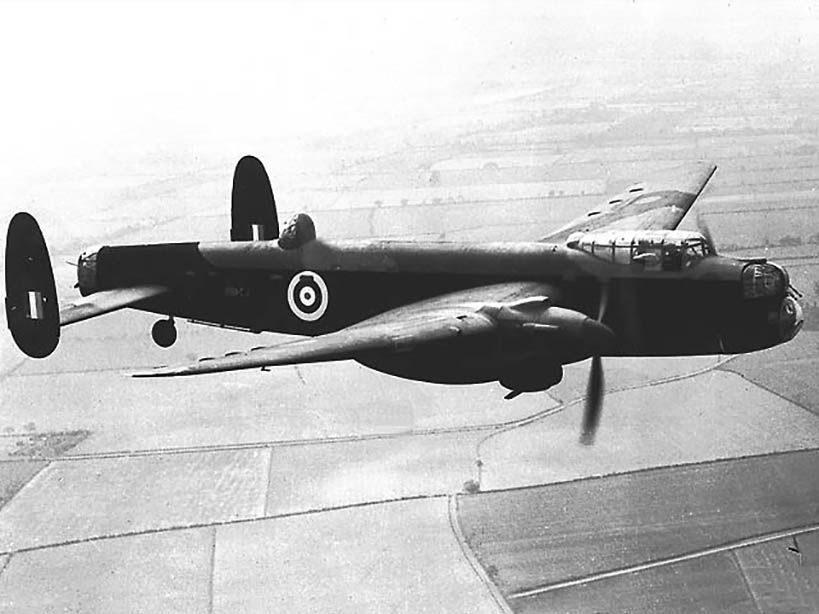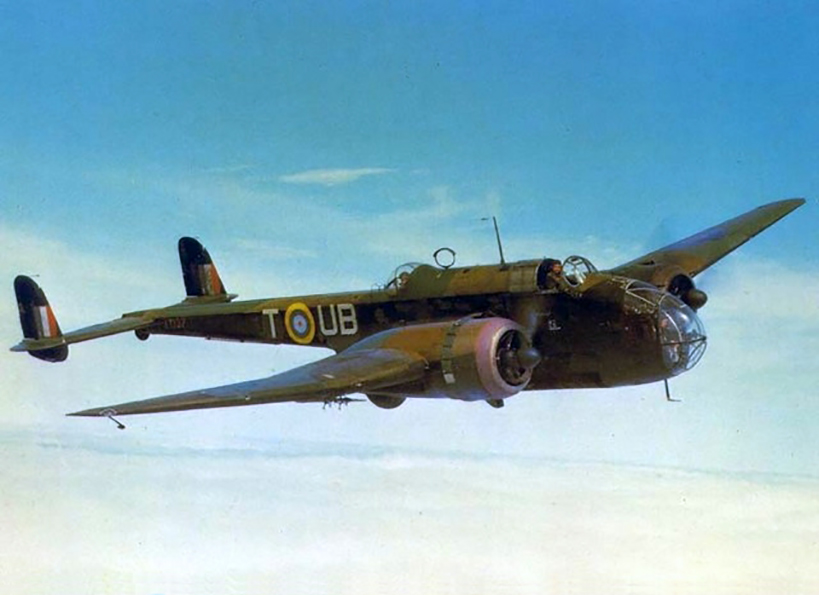Herring, Wilfred Stanley "Kipper"
- Date of birth:
- 1914 (Edmonton/London)
- Date of death:
- July 4th, 1943 (Off the coast of Gibraltar)
- Buried on:
- Air Forces Memorial Runnymede
Plot: 118. - Service number:
- 564688 (NCO)/ 44709 (Officer)
- Nationality:
- British
Biography
"Kipper" Herring enlisted in the Royal Air Force, as a Metal Rigger under training in September 1930. He was reassigned as a Pilot under training,in July 1937
He made an impossible return trip from Berlin on September 7th, 1941 when his aircraft was held in a cone of 50 searchlights above the city for four minites and was peppered wirh more than 30 Flak holes in wings and fuselage. He dragged his battered aircraft the 600 Miles to home, over the most heavily defended part of Germany, unarmed, on one engine and at a height of 5,000 feet. The AVRO Manchester L7432 crash landed at RAF West Raynham 06.00 on September 8th, 1941.(The recommendation tells a slightly different story).
Herring was specifically seconded for the Sikorski V.I.P. flights in the Summer of 1943 but was killed whilst serving as second Pilot in the General Sikorski Air Crash Disaster, on July 4th, 1943. The aircraft was later raised and the cause of the accident was found to be jamming of the elevator controls shortly after take off. Herring's was one of three bodies which were never recovered.
He was also Recommended for the A.F.C. (Periodical Awards 1.8.1942-31.1.1943), Acting Squadron Leader Wilfred Stanley Herring, D.S.O., D.F.M. (44709) 1654 Conversion Unit, 'This officer now commands "A" flight of this unit. He has himself flown on a great many occasions, both by day and night, in order to expedite the training of crews. He is not only a first class instructor but has administered his flight with efficiency and tact showing fine powers of leadership.'
Wilfred Stanley Herring is being commemmorated at the Runnymede Memorial, Panel 118.
1938: Sergeant
October 8th, 1940: Pilot Officer (probation)
October 8th. 1941: Flying Officer (war sub)
May 8th, 1942: Flight Lieutenant (war sub)
Do you have more information about this person? Inform us!
- Period:
- Second World War (1939-1945)
- Awarded on:
- August 31st, 1940
- Period:
- Second World War (1939-1945)
- Rank:
- Sergeant
- Unit:
- No. 44 (Rhodesia) Squadron, Royal Air Force
- Awarded on:
- November 22nd, 1940
"This Pilot has consistently set a high standard of courage in pressing home his attacks against the enemy. He has completed 217 hours operational flying. Several of the flights were carried out under adverse weather conditions and necessitated sea crossings of over 800 miles.
Covering Remarks by Air Officer Commanding - Air Vice Marshal Arthur ["Bomber"] Harris: This N.C.O. pilot has just been sent back to an O.T.U. for a rest after a long period of excellent work as a captain of aircraft. He has done consistently well on operations - many of a very hazardous nature."
Investiture took place on November 14th, 1941
- Period:
- Second World War (1939-1945)
- Rank:
- Acting Flying Officer
- Unit:
- No. 207 Squadron, Royal Air Force
- Awarded on:
- October 7th, 1941
"Flying Officer Herring has now completed over 320 hours operational flying as the captain of Hampden and Manchester aircraft and he has always shown the utmost determination to carry through whatever operation he has been allotted. On numerous occasions this officer has been detailed to attack the most heavily defended targets involving deep penetration into enemy territory, and in every instance he has completed his mission with a cool efficiency that has been a model to other aircrews.
His resolute behaviour was particularly noticeable on the night of September 7th, when he was the captain of a Manchester which took part in a raid on Berlin. Whilst over the City the aeroplane was the target for intense and accurate anti-aircraft fire and repeated hits were received. Severe damage was sustained, including the seizure of the port engine owing to a punctured radiator. Flying Officer Herring feathered the port air screw, dived out of the defences, sustaining more damage, and decided to attempt to fly the damaged aircraft to England. This decision was taken with the full knowledge that the flight would necessarily have to be made during a full moon by the shortest route which would entail passing through the thickest part of the enemy searchlight belt and fighter areas. At this time he was also aware that, following the failure of the port engine, there was no hydraulic power to the gun turrets and that the aeroplane was almost defenceless.
The return flight was made successfully at about 5,000 feet. The aircraft encountered cloud at the most critical part of the flight and in consequence of severe icing conditions was forced to fly below cloud across the main enemy searchlight area.
On arrival back in England, a successful landing was made at an aerodrome with practically no fuel left in the tanks.
The decision to make a return flight in the face of all the known and unknown hazards shows that this officer possesses the finest type of courage and determination and the manner in which the flight was executed demonstrates his skill and efficiency as a pilot and captain of a heavy bomber.
The modest demeanour, ability and devotion to duty of this officer has done an immense amount towards raising the confidence of flying crews in the capabilities of Manchester aircraft."
Awarded as an immidiate DSO.
Investiture took place on February 19th, 1942.
- Period:
- Second World War (1939-1945)
- Rank:
- Acting Squadron Leader
- Awarded on:
- June 2nd, 1943
- Period:
- Second World War (1939-1945)
- Period:
- Second World War (1939-1945)
- Period:
- Second World War (1939-1945)
- Period:
- Second World War (1939-1945)
Sources
- - The London Gazette Issue 34982 published on the 29 October 1940
- The London Gazette Issue 34998 published on the 22 November 1940
- Second Supplement to The London Gazette Issue 35297 published on the 3 October 1941
- The London Gazette Issue 35309 published on the 14 October 1941
- Third Supplement to The London Gazette Issue 35755 published on the 20 October 1942
- Supplement to The London Gazette Issue 36033 published on the 28 May 1943
- Spink











